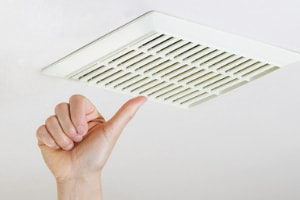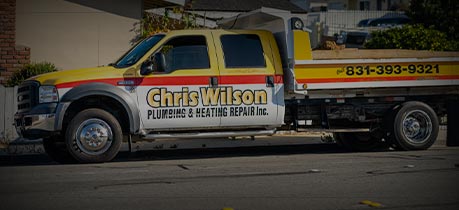Winter is just around the corner. Soon we’ll be turning on our heaters for comfort. Heating vents should be inspected and cleaned at least once a year, preferably just before the winter season. To do this, you must first know where the vents in your home are located. You can typically find heating system vents on the floor, walls, and baseboard.
There are many types of heating systems. From fuel type used to energy efficiency, spending a little time learning how our heaters work and the location of the vents in the home will facilitate troubleshooting minor problems that you can fix on your own.
Distribution Systems For Heating & Cooling
 A well-planned duct system sends conditioned air to every room in the house and provides thermal comfort evenly.
A well-planned duct system sends conditioned air to every room in the house and provides thermal comfort evenly.
For peak performance, vents should be the correct size and properly sealed. Vents are what really what keeps every room in the house warm.
They circulate heated air around the entire house after it is heated by your heating system. It is then dispersed throughout the various rooms inside the home by way of vents. This is done in one of three ways, by gravity, forced-air, or radiant systems, which we will explain below.
Gravity Systems
Gravity systems presume that hot air rises. The furnace is usually located near the floor or below it. Warm air is carried upward and through ducts to vents on the floor that dispense warm throughout the house. When the furnace is on the main floor, the vents can be found above on the walls.
Forced-Air Systems
The blower in a forced-air system pushes the air through ducts or vents to the rooms of the house. When warm air enters the rooms, cold air will then flow through separate vents into the furnace, where it is heated. You can adjust forced-air systems by increasing or decreasing the amount of air that flows through the house.
These types of heating systems are very popular because they offer increased energy savings improve air quality indoors, and combine heating and cooling by using the same ductwork and vents to dispense hot or cold air.
Radiant Heating Systems
Radiant systems use hot water heated by the furnace as the heat source. It is distributed through pipes inside walls, below the floor, or in the ceiling. Warm radiators in the rooms heat the walls, floors, or ceilings of the rooms. Electric heating panels inside the system will produce heat which is then radiated into the rooms.
Radiant heating systems are generally more efficient than forced-air heating. These systems eliminate duct losses caused by cracks and leaks in the ducts. People who are sensitive to allergens prefer radiant heat because it does not circulate airborne particles the way forced-air systems do.
Do You Know Where Your Vents Are?
 The correct placement of your ductwork and vents depends on your heating system. Ductwork can be found in crawlspaces, and attic systems might place vents in the ceiling instead. There should be vents in each room of the house.
The correct placement of your ductwork and vents depends on your heating system. Ductwork can be found in crawlspaces, and attic systems might place vents in the ceiling instead. There should be vents in each room of the house.
Every room that is 100 square feet or smaller will need at least one vent, with two or three vents in rooms larger than 100 square feet. Poor vent placement will hinder airflow and rooms may heat unevenly.
Knowing where your vents are located and keeping them clear of dust and debris is essential. You should examine your vents yearly. If cracks or other damage is found, resolve them immediately.
Closing Your Heating Vents is Not Recommended
 Closing the vents in some rooms can throw off the pressure balance that your system is intended to operate under. This can result in issues, such as higher energy bills and even system failure.
Closing the vents in some rooms can throw off the pressure balance that your system is intended to operate under. This can result in issues, such as higher energy bills and even system failure.
Your HVAC system is designed to produce a precise amount of air based on the size of your home. Your vents have been strategically placed so the air that comes out of your vents is equal to the air that is received by your return vents.
Give Chris Wilson Plumbing & Heating Repairs Inc in Monterey & Santa Cruz Counties, CA a call to discuss your heating vents and how you may be able to save money on your energy bill by simply providing proper vent care and maintenance.







